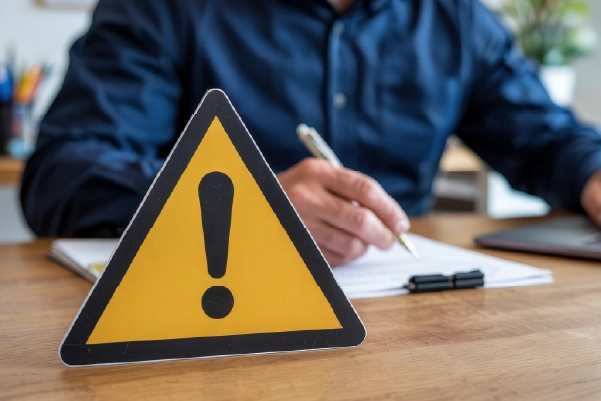A Comprehensive City Vitality Index Guide
25-Nov-25
An engine that functions to fuel a company’s customer acquisition, pipeline growth, sales, and revenue - that is what demand generation is. Building this engine is not just about hiring marketers or SMEs. It is about creating a growth system that combines the power of strategy, creativity, and data analytics.
As the current marketplace keeps evolving and customer journeys keep becoming more complex, having the right team structure can make the difference between stagnant pipelines and scaling. So, how can you build your demand generation team structure to drive consistent and measurable demand? Let us explore.
Demand generation team structure is the foundation of your organisation's ability to translate strategy into measurable growth. When properly configured, team structures allow leaders to manage the team with clarity and specificity. Each role is focused more on outcomes than they are on activities, creating sustainable efficiencies and removing siloed efforts, duplication and increasing collective efforts. This directly allows marketing, sales and product teams to align and operate collectively toward a single revenue target.

A scalable structure increases agility, enabling you to pivot based on the changing dynamics of the market and breaking technology. Most importantly, it elevates performance with respect to lead quality, lead conversion speed, and ultimate return on investment.In the absence of any consistent set of structures in place, demand generation fluctuates between incongruent initiatives and tactics, with all of the costs, inefficiencies, and challenges of ramping and scaling effectively in tow. For today's leaders, it is no longer optional to have the right set of structures in place. It is the basis on which truly sustainable, predictable revenue growth can flourish.
A demand generation organisation structure is an engine that determines how people, processes, and technology work together to turn strategy into measurable growth. This structure clarifies the roles, responsibilities, and processes that drive qualified leads and revenue generation.
Demand generation organisation structure consists of:
Strategic Leadership:Defining the vision, aligning goals, and making sure that initiatives work in tandem with business growth.
Specialised Functions:Building teams for creating campaigns & content, analysing data, and operational efficiency. This creates a well-oiled machine to turn strategy into execution.
Cross-Functional Team Collaboration:Different teams like marketing, sales, product, and customer success function as one revenue engine.
Technology and Data Infrastructure:This includes automation, personalisation in campaigns, and real-time performance analytics to enable smarter decision making.
Having your own demand generation organisation structure will help you create a connective tissue across different teams that results in demand at scale.
To build an effective demand generation team structure, personalise these key elements based on your organisational goals and functions:
Clarity is an essential component of performance. Every team member should know their primary responsibilities, their metrics of success, and how their work contributes to pipeline or revenue growth. This clarity will reduce duplication and cause less confusion across collaborating departments. Moreover, this will allow teams to take ownership of their work. Each contributor, seeing their role in the larger process, will improve execution and make collaboration more efficient.
An effective demand generation group incorporates a balance between depth and agility, through a specialised, exact approach, and a wide-area, flexible approach. A specialist can provide an in-depth understanding of critical elements, such as SEO, paid media, content, and automation. Whereas a generalist can create a flexible mindset where they connect the dots across the process and pivot quickly. The right mix of both will help the team operate with efficiency and effectiveness, with the necessary strategic versatility and innovation.
Demand generation team structure should exist without silos. The integration of demand generation with sales mimics a robust lead handoff and feedback mechanism. Working with the product teams rationalises the craft messaging and positioning for the customers, and obtaining feedback from customer success helps to shape retention and upsell strategies. Regular syncs, shared dashboards, and unified planning sessions build trust, alignment, and shared accountability across all functions.
Observing execution and turning the outputs from basic to excellent is only possible with accountability. Use metrics like lead quality, conversion rate, ROI, and pipeline contribution to measure impact. Assigning ownership for each KPI and measuring them regularly can help you adapt and change your strategies to drive success.
Great team structures are made for growth. Consider modular design roles and make sure they can adjust to the business as it grows. Invest in ongoing employee training, workflows that can change, and scalable technologies. Build a flexible foundation for the team so people can efficiently navigate the complexity, needs, and changes in the market.
Demand generation is not just about driving more leads, but also about driving revenue impact. Teams must prioritise their campaigns, focus on ideal customer profiles (ICPs), and measure the success of campaigns by pipeline contribution, not vanity metrics. A revenue-based approach positions marketing as a growth driver, not just a support function.
Here are all the roles and functions in a demand generation organisation structure:
Director / Head of Demand Generation –Leads strategy, team alignment, and revenue-focused growth.
Demand Generation Specialists / Campaign Managers –Plan and execute multi-channel campaigns with measurable outcomes.
Content / SEO / Strategy Lead –Creates content that attracts, engages, and converts; drives SEO and thought leadership.
Marketing Operations / Data Lead – Manages tech stack, analytics, and performance reporting.
Paid Media / Performance Marketing Specialist – Runs paid campaigns across digital channels focused on ROI.
Marketing Automation / Technologist – Owns automation tools, workflows, and integrations.
Cross-Functional Liaison – Aligns sales, product, and customer success for unified execution.
Building a high-performing demand generation team structure requires more than just filling roles. Here are some best practices you can use to maximise the efficiency of your demand generation team:
Begin with Fundamental Roles, Then Add as Needed: Core roles like strategy lead, campaign manager, etc, are the starting point. Keep adding specialists wherever needed as the team grows to maintain focus and flexibility.
Hire for both - Strategic Mindset and Execution: Your teams must balance the vision of the company and execution. Individuals who can understand the vision of your company can execute both short and long-term actions better.
Invest in Onboarding and Continuous Learning: Train new hires and make them well-versed about your brand, audience, and tools. Continuous learning will ensure that your team is always on their toes and quick thinkers who create meaningful strategies to drive revenue.
Adopt an Agile Approach to Campaign Planning: Use iterative cycles for campaign design, implementation, and optimisation. This approach speeds the implementation, and you are also able to respond to learning that comes from each campaign cycle.
Foster a Culture of Experimentation: Encouraging calculated risk-taking will cultivate a culture of experimentation and decision making based on data. Use data to inform creative decisions with the firm belief that every decision can lead to measurable growth.
With these practices in place, let us explore some tips for qualities that fuel a high-performing demand generation team:
Curiosity:Encouraging team members to be on the lookout for new tools, channels, and tactics they can employ will enhance the quality of their output. It will also help the company to stay ahead of the market and drive eye-catching campaigns.
Collaboration: With efficient collaboration, your teams can break down silos and enhance their combined efforts for common revenue goals.
Accountability:With each team member taking ownership of their work, accountability comes easily. Taking failures as opportunities by reflecting on the actions can significantly improve team performance.
Agility: In a market that is constantly changing, the team is successful at pivoting strategies, optimising campaigns in real time, and anticipating new technologies to incorporate into the strategy.
Customer Focus: Solving real problems in real time for the target audience - that is the crux of every team effort. Having a customer focus will ultimately ensure that the demand generation initiatives are relevant, engaging, impactful, and targeted to maximise ROI.
Here are some of the most common challenges in structuring your demand generation teams, and how you can avoid them:
No demand generation activity is isolated. If your teams are siloed, then the quality of your demand generation activities will be compromised. Introducing shared goals, common dashboards, and collaboration tools will enable efficient execution between teams and result in more successful campaigns.
Misalignment and miscommunication can manifest themselves in wasted leads and missed opportunities. Co-develop SLAs, include feedback loops and set up recurring syncs to keep both marketing and sales moving toward the same revenue goal.
Tools can make your work efficient, but they ultimately cannot replace the human touch of creating targeted and good strategies. Creative execution can be amplified by tools, but don’t let them define your strategy.
Inaccurate or incomplete data hampers targeting and measurement. Ensuring you have clean, actionable data, implementing standardised procedures and using regular audits to confirm your campaigns are targeting the correct audience and creating measurable outcomes.
Avoiding these pitfalls will ensure a strategic and revenue-driven demand generation engine, rather than a fragmented or reactive one.
As your organisation expands, consider adding specialised positions such as Account-Based Marketing or Lifecycle Marketing specialists to increase expertise in this area. As part of your geographic or channel expansion, consider creating new job roles to reach larger audiences.
Establish pods that are focused on a region or vertical to run targeted campaigns, supported by dedicated media partnerships and ownership. Strengthen leadership roles to ensure clear vision, alignment, and strategic planning as the team scales.
Keep a close watch on performance metrics to make informed decisions in resource allocation and hiring. This will bring in an additional layer of measurable results for all positions, too.
The future of demand generation team structure is being guided by technology, data, and changing buyer expectations. Here are a few trends to look out for:
As with every other domain, demand generation is also being impacted by AI and automation. They are affecting how campaigns are being run and personalised on a fundamental level. With predictive lead scoring, nurture workflows, and more, teams can produce a lot of highly relevant content. This frees up the talent to focus on more strategic and creative thinking.
As marketing begins to be held accountable for revenue more closely, the integration between marketing, sales and finance becomes tighter so that campaigns can be linked to the pipeline, allowing for more precise forecasting, measuring ROI and revenue based decision making tactics.
Transitioning from mass marketing to ABM has already become a more accepted approach recently, and is scaling worldwide for a reason. It allows teams to target high-value accounts, send personalised messaging, and increase conversion rates.
Progressive companies start to combine internal talent with an agency and freelancers to create a blended model, making sure you have the depth of talent internally, as well as the scalability and specialists needed to build out your marketing needs as the market changes.
Analytics have become an essential component of every decision. High-touch planning, execution, and optimisation will have insights embedded to make sure your teams really understand the decision making process with continuous improvement in focus.
Together, these trends are shaping demand generation teams that are agile, accountable, and equipped to drive measurable growth in a dynamic marketplace.
Dun & Bradstreet, the leading global provider of B2B data, insights and AI-driven platforms, helps organizations around the world grow and thrive. Dun & Bradstreet’s Data Cloud, which comprises of 455M+ records, fuels solutions and delivers insights that empower customers to grow revenue, increase margins, build stronger relationships, and help stay compliant – even in changing times.

Create a faster path from prospect to profitable relationship with D&B Hoovers. Get comprehensive USA & UK company information.

Target prospects more effectively using the most indispensable data and sales tools. Use our sales and marketing solutions to drive better ROI.